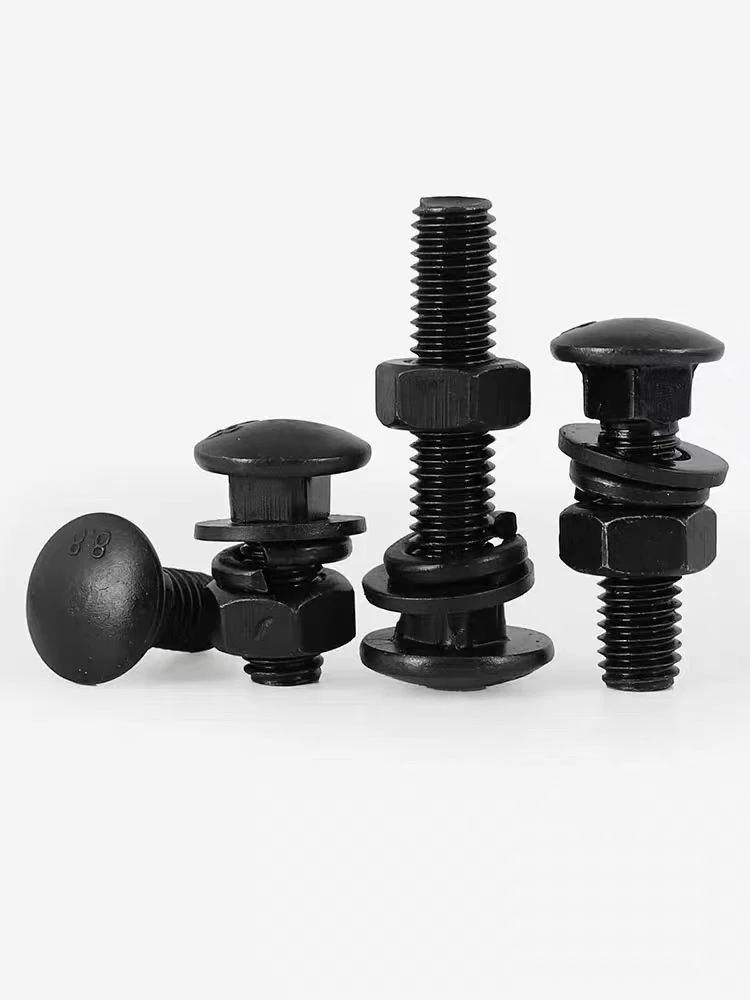

types of flange nuts
दिसम्बर . 13, 2024 18:08 Back to list
types of flange nuts
Types of Flange Nuts A Comprehensive Overview
Flange nuts are an essential component in many engineering and construction applications. Their unique design incorporates a wide flange, which helps to distribute the load over a larger surface area, thus providing increased stability and resistance against loosening. This article explores the various types of flange nuts, their purposes, and applications across different industries.
What are Flange Nuts?
Flange nuts are specialized nuts that feature a wider, flat surface on one side, known as the flange. This flange serves a dual purpose it enables even load distribution and enhances grip, effectively reducing the risk of the nut loosening due to vibrations. They can be made from a variety of materials, including steel, stainless steel, brass, and nylon, making them versatile for different environments.
Types of Flange Nuts
1. Standard Flange Nuts These are the most common type of flange nuts. They feature a flat bottom surface and a flanged top, allowing them to sit flush against the assembly surface. Standard flange nuts are widely used in various applications due to their simplicity and effectiveness.
2. Serrated Flange Nuts Serrated flange nuts have a serrated (toothed) surface on their flange. This design enhances grip and minimizes the potential for loosening during vibration. They are particularly useful in automotive and machinery applications where vibrations are a common concern.
3. Locking Flange Nuts Locking flange nuts combine the features of a standard flange nut and a locking mechanism. They often incorporate nylon inserts or other forms of locking technologies to prevent them from loosening. These nuts are ideal for critical applications where reliability and safety are paramount.
4. Capped Flange Nuts Capped flange nuts feature a cover that protects the nut from environmental damage, corrosion, and contamination. This additional layer ensures longevity and is often used in outdoor or harsh environments, such as marine applications.
types of flange nuts

5. Blind Flange Nuts These nuts are designed for applications where access to the backside of the assembly is constrained. Blind flange nuts can be installed in limited spaces, providing a secure fastening solution without needing access to both sides. They are especially useful in automotive and aircraft manufacturing.
6. Plastic Flange Nuts Made from materials like nylon or other polymers, plastic flange nuts are lightweight and corrosion-resistant. They are often employed in electronic assemblies or other environments where metal contamination must be avoided.
7. Hex Flange Nuts Hex flange nuts combine a hexagonal design with a flange. This allows for easy installation using standard wrenches while providing the load distribution benefits of a flange. They are commonly used in structural assemblies and heavy machinery.
8. Flange Lock Nuts Flange lock nuts feature structural elements that help retain them securely in place. These could be in the form of serrations or other locking mechanisms. They are particularly suited to high-stress applications where traditional nuts may not offer sufficient security.
Applications of Flange Nuts
Flange nuts are used in a wide range of industries, including automotive, aerospace, construction, and manufacturing. They are vital for assembling machinery components, automotive parts, structural frameworks, and electronic devices. Their versatility allows engineers to choose the right flange nut type based on specific application demands, such as load requirements, material compatibility, and exposure to environmental factors.
Conclusion
Understanding the various types of flange nuts helps in selecting the right fastener for the job. Each type offers distinct advantages that cater to different needs, from enhanced gripping capabilities to environmental protection. When choosing a flange nut, consider the specific application requirements to ensure safety, durability, and performance across all engineering projects. Flange nuts may seem like a small part of the assembly process, but their contribution to overall stability and reliability is undeniably significant.
Latest news
-
Hot Dip Galvanized Bolts-About LongZe|High Strength, Corrosion Resistance
NewsJul.30,2025
-
High-Strength Hot Dip Galvanized Bolts - Hebei Longze | Corrosion Resistance, Customization
NewsJul.30,2025
-
Hot Dip Galvanized Bolts-Hebei Longze|Corrosion Resistance&High Strength
NewsJul.30,2025
-
High-Strength Hot-Dip Galvanized Bolts-Hebei Longze|Corrosion Resistance&High Strength
NewsJul.30,2025
-
Hot Dip Galvanized Bolts-Hebei Longze|Corrosion Resistance&High Strength
NewsJul.30,2025
-
Hot Dip Galvanized Bolts - Hebei Longze | Corrosion Resistance, High Strength
NewsJul.30,2025

